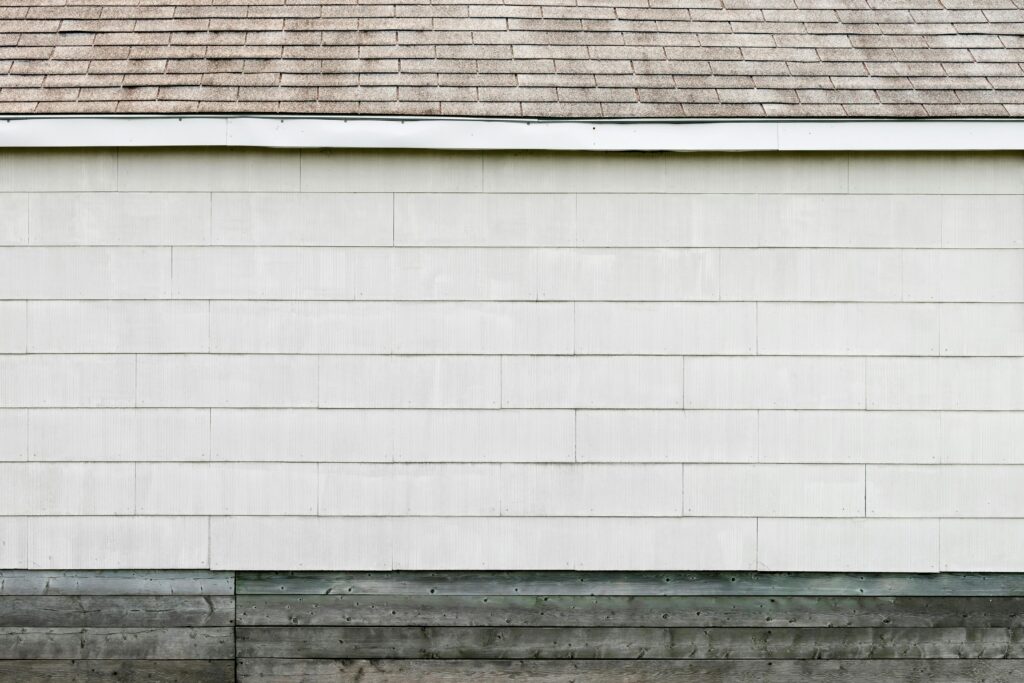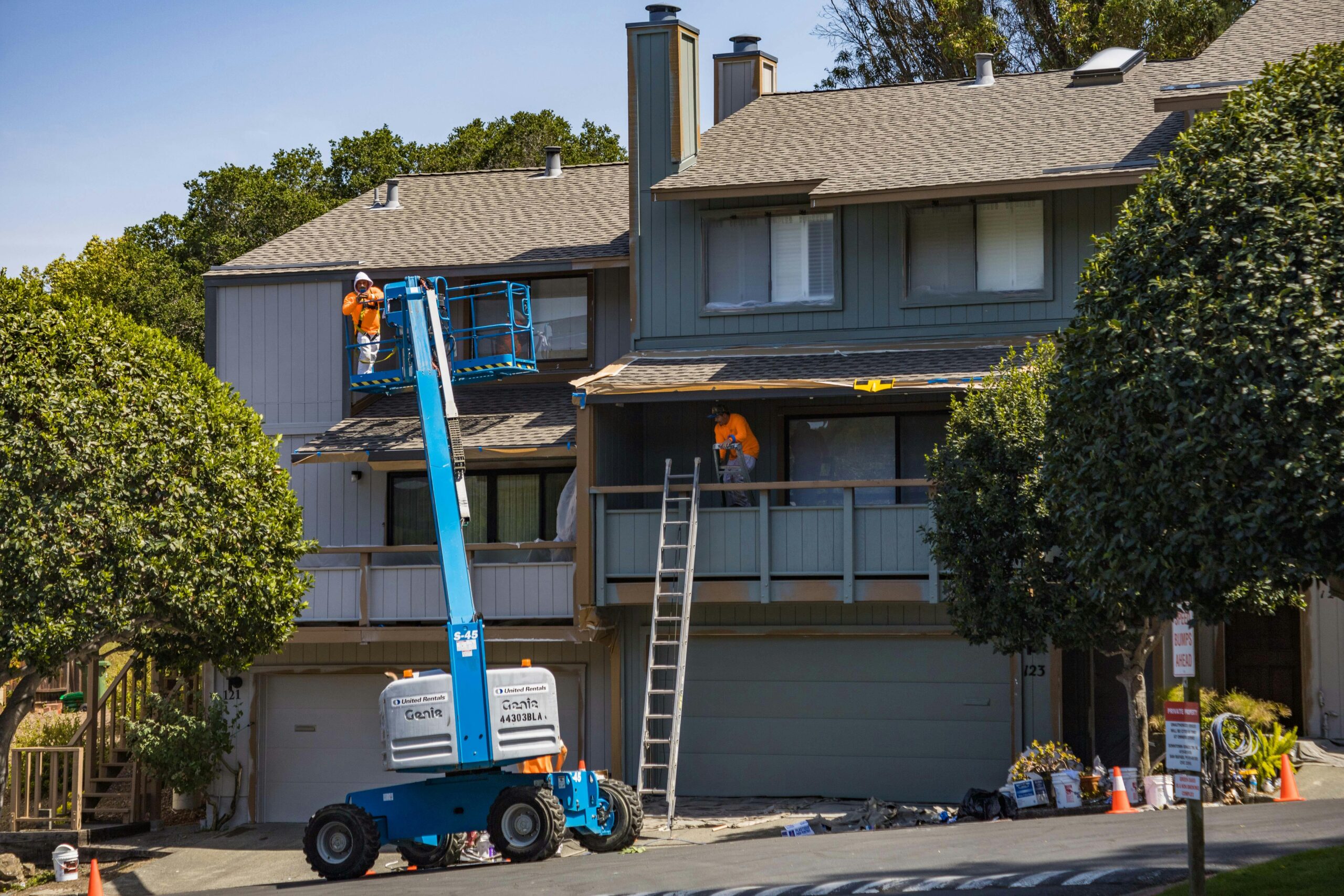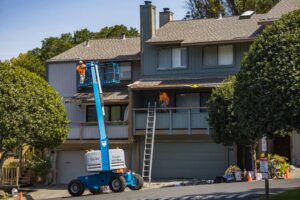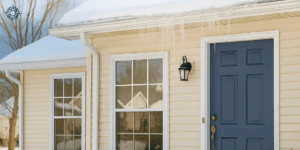The Real Cost of Ignoring Your Siding
Most homeowners underestimate how much damage neglected siding can cause—until it’s too late. A small crack, missing caulk line, or warped panel might not seem urgent, but it can allow moisture to creep in behind your walls. Once water intrusion begins, insulation gets wet, wood framing can rot, and energy bills start to climb. In fact, even minor gaps in exterior siding can increase heating and cooling costs by 10–15% per year, especially in Minnesota’s extreme seasonal shifts.
Neglected siding isn’t just an aesthetic issue—it’s a financial one. What starts as a $200 resealing job can easily become a $10,000 siding repair if water damage spreads behind your walls. Over time, the hidden costs multiply: structural decay, mold growth, pest infestations, and lost property value.
Let’s break down how different types of siding damage create these silent costs—and how routine maintenance can save you thousands in the long run.
Why Siding Maintenance Matters in Minnesota’s Climate

Minnesota’s weather is tough on homes. Freeze/thaw cycles, driving rain, and humid summers cause constant expansion and contraction across exterior materials. The smallest gaps in your siding, trim, or flashing can allow moisture to sneak inside—where it freezes, expands, and pries apart seams even more.
Strong winds can also force rain under siding edges, leading to water damage behind siding that isn’t visible until staining, bubbling paint, or mold appears indoors. Over time, these problems weaken your home’s envelope, reducing energy efficiency and increasing repair costs.
That’s why regular siding maintenance—cleaning, resealing joints, and inspecting for cracks—should be part of every Minnesota homeowner’s seasonal checklist. The goal isn’t just to keep your home looking good—it’s to keep it sealed tight against the elements.
Warped or Buckled Siding: Energy Loss and Hidden Moisture
Warped or buckled siding panels are common in older homes or those with poor ventilation. Sun exposure and moisture buildup cause materials like vinyl or wood to expand and distort, leaving gaps for air and water to enter.
When this happens, your home’s insulation effectiveness drops dramatically. Warm indoor air escapes in winter, and humid outdoor air seeps in during summer. That forces your HVAC system to work harder—often raising energy bills by hundreds of dollars per year.
Hidden Cost Example:
- Ignoring it: Over five years, you could spend an extra $1,000–$1,500 on energy alone.
- Fixing it early: A $300–$500 siding tune-up or realignment stops the problem before it worsens.
Moisture trapped behind warped siding can also lead to mold growth, rotted sheathing, and peeling paint. A quick inspection and minor adjustment today can prevent a costly siding repair tomorrow.
Cracked or Broken Panels: Pathways for Water and Pests
Cracks in siding may seem purely cosmetic—but they’re open doors for both water and insects. Rain, snowmelt, and wind-driven moisture can find their way through even hairline fractures. Once that water freezes, it expands and forces the crack wider.
The result? Water damage behind siding, soft wall sheathing, and potential structural compromise. These damp areas also attract pests like carpenter ants, termites, or even mice seeking shelter in colder months.
Hidden Cost Example:
- Ignoring it: Replacing rotten framing and insulation after prolonged exposure can exceed $6,000–$10,000.
- Fixing it early: Repairing a few cracked panels costs around $250–$600.
Regular siding repair prevents small cracks from spreading and keeps your home secure, insulated, and pest-free.
Fading and UV Damage: Curb Appeal and Property Value Loss

Faded or discolored siding doesn’t just dull your home’s appearance—it can signal material degradation. Prolonged UV exposure makes vinyl brittle and weakens paint bonds on wood or fiber cement. When surfaces fade unevenly, they lose their ability to reflect sunlight effectively, contributing to overheating and uneven temperature control inside the home.
Curb appeal matters, especially if you plan to sell. Buyers often judge maintenance quality by what they can see. Neglected siding can reduce a home’s perceived value by 5–10%, even if the structure underneath is sound.
Hidden Cost Example:
- Ignoring it: A full siding replacement could cost $15,000–$25,000.
- Maintaining it: A periodic cleaning and resealing ($200–$500) preserves color and longevity.
Regular washing, repainting, or UV-resistant coatings every few years protect both your investment and your home’s appearance.
Caulking Failure and Flashing Gaps: Silent Water Intrusion
Behind every siding system lies a network of flashing and caulking that keeps water out of vulnerable joints—around windows, doors, and rooflines. When those seals fail, water can penetrate undetected and travel along framing until it surfaces somewhere unexpected, such as inside a ceiling or basement wall.
This type of roof leak damaged siding or flashing failure is among the most expensive forms of water damage because it’s often hidden. By the time you notice it, interior materials may already be compromised.
Hidden Cost Example:
- Ignoring it: Interior wall repair and mold remediation can exceed $8,000–$12,000.
- Preventing it: Resealing joints and replacing cracked caulk every few years costs under $300–$500.
A quick bead of high-quality exterior sealant can prevent thousands in hidden damage. Regularly check areas where siding meets trim or flashing—especially after strong storms.
Pest and Woodpecker Damage: Small Holes, Big Problems
Minnesota homeowners know the sound of a persistent woodpecker tapping on cedar or composite siding. While the holes may seem minor, they open direct entry points for moisture, mold, and insects. Carpenter ants and rodents also exploit these small breaches, nesting inside insulation or between wall studs.
Once inside, pests can chew electrical wiring or insulation, creating safety hazards and additional repair costs.
Hidden Cost Example:
- Ignoring it: Replacing pest-damaged siding sections and insulation can run $4,000–$8,000.
- Preventing it: Installing bird deterrents, filling holes promptly, or upgrading to pest-resistant materials may cost only $300–$600.
Addressing woodpecker damaged siding quickly is one of the simplest ways to protect your home from a chain reaction of larger problems.
The True Price of Deferred Maintenance
When viewed individually, each type of siding issue might seem minor. But combined over several years, the hidden costs can be staggering. Rising energy bills, structural deterioration, and aesthetic decline can all erode your home’s value and comfort.
Routine siding maintenance—cleaning, sealing, and inspections—costs a fraction of what major repairs demand. For most Minnesota homes, annual upkeep ranges from $300–$800, while full replacement after years of neglect can exceed $20,000.
By addressing small issues early, you’re not just maintaining siding—you’re preserving insulation efficiency, preventing mold, and extending the lifespan of your entire home exterior.
Partner with Compass Exteriors for Siding Repair and Protection
Whether you’re dealing with storm damaged siding, fading color, or early signs of moisture intrusion, Compass Exteriors is here to help. Our local team understands Minnesota’s climate and the toll it takes on home exteriors. We specialize in detailed inspections, targeted siding repairs, and full replacements that restore both protection and beauty.
We don’t just fix visible problems—we look deeper to identify hidden risks before they become costly surprises.
Ready to protect your home?
Schedule your siding inspection with Compass Exteriors today and get peace of mind knowing your home is sealed, efficient, and ready for every Minnesota season.







